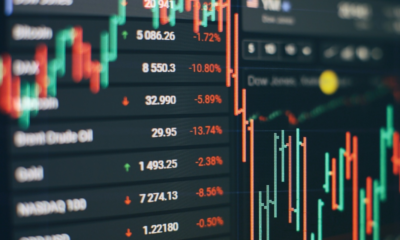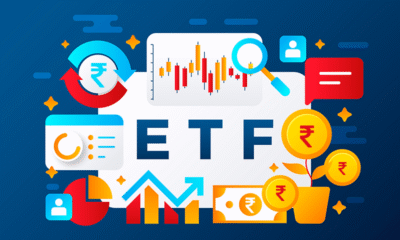Finance
Global Stock Market Volatility in 2025: Key Factors and Predictions
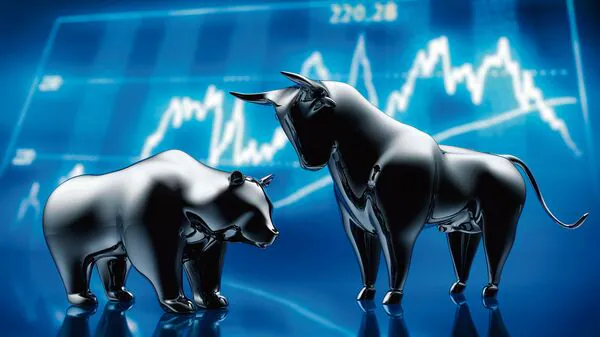
Introduction to Stock Market Volatility
Stock market volatility refers to the fluctuations in the prices of securities within the financial markets. These fluctuations can be characterized by rapid increases or decreases in stock prices, often driven by various factors, including economic indicators, geopolitical events, and market sentiment. Understanding volatility is crucial for investors as it provides insights into market behavior and helps in making informed investment decisions. High volatility typically indicates a greater risk, which can deter conservative investors, while low volatility might encourage a more stable investment environment.
The significance of volatility extends beyond just individual investors; it impacts entire economies. Increased volatility can lead to uncertainty in financial markets, which may affect consumer confidence and spending. Additionally, extreme fluctuations can result in shifts in monetary policy as central banks attempt to stabilize economies during turbulent times. This interconnection illustrates how stock market volatility acts as both a reflection of economic conditions and a catalyst for further economic changes.
Market sentiment plays a pivotal role in influencing volatility. Investor perceptions and reactions to news and trends can exacerbate price movements. For instance, during periods of uncertainty, such as economic downturns or political instability, investors may move to liquidate assets, further contributing to market fluctuations. By analyzing past trends, one can observe how various events have historically led to significant volatility spikes, setting a precedent for future occurrences.
As we explore the anticipated volatility in 2025, it is essential to consider current economic indicators, including interest rates, inflationary pressures, and global trade dynamics. These factors will help shape investor behavior and market sentiment in the coming years. Therefore, understanding stock market volatility is vital not only for investors but also for policymakers aiming to foster stable economic conditions.
Historical Context of Market Volatility
Understanding the trajectory of stock market volatility necessitates an examination of historical trends, particularly as we approach the year 2025. Volatility is a characteristic of financial markets that reflects changes in investor perception, external economic impacts, and geopolitical events. Over the last few decades, several notable occurrences have significantly influenced market stability, creating periods of both turmoil and recovery.
One of the most striking examples of volatility was the global financial crisis of 2008. Triggered by excessive risk-taking in the housing market and the subsequent collapse of major financial institutions, this event caused unprecedented declines in stock prices across the globe. The aftermath saw extreme fluctuations as markets struggled to regain trust and stabilize, with the recovery period extending through much of the following decade.
In addition to crises like the one experienced in 2008, macroeconomic factors such as interest rate changes, inflation, and unemployment rates have historically contributed to market volatility. For instance, the Federal Reserve’s decisions on interest rates can lead to rapid shifts in investor confidence, affecting stock prices and overall market performance. Similarly, inflationary pressures and economic downturns significantly shape market sentiment, often resulting in sudden price movements.
Notable geopolitical events, such as trade wars or political instability, have also played vital roles in influencing stock market fluctuations. The trade tensions between major economies, particularly the United States and China, have led to heightened uncertainty among investors, resulting in marked volatility during key trading periods.
Language that reflects these different periods, such as “crises,” “recoveries,” and “macroeconomic influences,” will be essential for understanding the current landscape as we anticipate the factors that may affect volatility in 2025. As we explore these factors further, it is crucial to draw parallels with historical precedents to gain insights into potential future developments.
Economic Factors Driving Volatility in 2025
As we look ahead to 2025, several economic factors are expected to play a crucial role in driving stock market volatility. Understanding these elements is essential for investors aiming to navigate potential market fluctuations effectively.
One of the predominant concerns is inflation rates. The trajectory of inflation significantly influences purchasing power and consumer confidence. If inflation continues to rise unchecked, it may lead to increased costs for businesses, ultimately squeezing profit margins. This pressure could cause market players to reassess their valuations, leading to heightened volatility. Conversely, if inflation is kept in check through effective policy interventions, it may stabilize market conditions, encouraging investment.
Interest rates are another vital driver of market movement in 2025. Central banks worldwide will need to carefully balance the need for economic growth with the risk of overheating the economy. A rise in interest rates is often associated with tighter monetary policy, which can induce market instability. Investors frequently react negatively to predictions of rate hikes, as increased borrowing costs can hinder corporate expansion and consumer expenditure. As such, interest rate adjustments will be closely monitored for their potential impact on market sentiment.
Additionally, supply chain disruptions continue to pose significant risks for global markets. The interconnected nature of today’s economy means that production delays in one region can reverberate across the globe, impacting stock valuations in multiple sectors. Investors may react to news regarding supply chain issues with apprehension, which can exacerbate market volatility as companies struggle to meet demand.
Lastly, geopolitical tensions cannot be overlooked. Political instability, trade disputes, or military conflicts can undermine investor confidence and lead to market fluctuations. Heightened uncertainty around international relations can prompt a flight to safety, resulting in significant movements in stock prices.
Technological Advancements and Their Impact on Markets
As we approach 2025, the role of technological advancements in shaping global stock market volatility becomes increasingly significant. Innovations such as artificial intelligence (AI), blockchain technology, and advanced trading algorithms are poised to alter trading behavior, enhance market access, and expedite trade execution, ultimately impacting market dynamics and investor confidence.
AI-driven trading systems facilitate efficient analysis of vast datasets, allowing traders to make informed decisions in real time. These algorithms can identify patterns and trends that human traders might overlook, leading to quicker buy and sell actions. However, this speed can introduce volatility, as rapid trades initiated by AI might create sudden price fluctuations in the market. Furthermore, the reliance on AI could result in a herd mentality, where investors follow algorithmic signals without thorough analysis, contributing to increased market unpredictability.
On the forefront of securing transactions and improving transparency, blockchain technology offers a decentralized ledger system that can enhance trust among market participants. This technology reduces the chances of fraud and errors, potentially leading to smoother transactions and lower volatility. However, the integration of blockchain into existing financial systems may encounter regulatory challenges, which could initially create additional market stresses as stakeholders adjust to new frameworks.
Moreover, advancements in trading algorithms have made it possible for retail investors to access markets more efficiently. This democratization of trading can increase market participation; however, it also raises concerns over the potential for flash crashes. The speed at which trades can be executed means that any disruption—a result of technological failure or market rumor—can provoke swift and dramatic reactions from both institutional and retail investors alike.
In summary, as we look ahead to 2025, the technological innovations at play will significantly influence global stock market volatility. While they present opportunities to enhance trading efficiency and accessibility, they also pose risks that market participants must navigate carefully.
Investor Sentiment and Market Psychology
Investor sentiment and market psychology play crucial roles in shaping market behavior and, consequently, volatility. Analyzing these components reveals how emotions, cognitive biases, and social phenomena can significantly influence investment decisions and market movements. In the context of 2025, it is anticipated that these factors will be paramount in driving stock market fluctuations.
Fear and greed are two dominant emotions that often dictate investor behavior. During periods of market growth, a sense of greed can lead investors to become overly optimistic, resulting in the formation of market bubbles. Conversely, in times of economic uncertainty or downturn, fear can trigger panic selling, exacerbating declines and increasing volatility. Understanding these emotional drivers can aid investors in making informed decisions, particularly in a rapidly changing market landscape.
Herd behavior is another psychological element that contributes to market volatility. When individuals observe others making certain investment choices, they may feel compelled to follow suit, regardless of their individual analysis of the market conditions. This can result in rapid and exaggerated price movements, as large numbers of investors flock to buy or sell assets simultaneously. In 2025, it is likely that social media and information accessibility will further amplify this tendency, creating environments where rumors can spread quickly and impact sentiment decisively.
Moreover, cognitive biases, such as confirmation bias and overconfidence, also significantly impact investor choices. Investors may seek information that supports their pre-existing beliefs while dismissing contrary data, leading to skewed perspectives. This can result in overbought or oversold conditions within the market, contributing to heightened volatility. As such, it becomes essential for investors to be aware of these psychological influences and to strive for a more rational approach to their investment strategies in anticipation of potential market shifts in 2025.
Geopolitical Influences on Financial Markets
The geopolitical landscape significantly impacts global stock market volatility, shaping investor sentiment and influencing market fluctuations. By 2025, several key factors are anticipated to affect financial markets, including potential conflicts, trade disputes, and evolving international relations. These elements create an environment characterized by uncertainty, often causing investors to reassess their strategies in response to geopolitical developments.
One primary concern is the possibility of regional conflicts that could disrupt economic stability. Tensions in areas such as Eastern Europe, the South China Sea, or the Korean Peninsula have historically demonstrated that even localized disputes can have far-reaching consequences for global markets. A sudden escalation of any conflict within these regions could trigger immediate reactions in stock prices, reflecting investors’ flight to safety. This phenomenon illustrates how geopolitical conflicts can create fluctuations in market confidence, leading to increased volatility.
Furthermore, trade disputes have a lasting effect on stock market dynamics. As countries navigate complex trade agreements and tariffs, the volatility of international relationships becomes evident. For instance, ongoing trade tensions between major economies like the United States and China could result in economic consequences that reverberate throughout the global marketplace. The imposition of tariffs or trade barriers may disrupt supply chains, thereby affecting company profitability and pushing investors to reevaluate their positions.
Additionally, the intertwined nature of current global alliances suggests that diplomatic relationships will continue to evolve, further influencing market stability. As nations negotiate strategies to address globalization challenges, the resulting agreements or breakdowns may lead to sudden stock market shifts. Investors keenly observe these developments, adapting their portfolios to mitigate potential losses triggered by geopolitical uncertainties. By understanding these factors, market participants can better position themselves to navigate volatility in the upcoming years.
Predictions for the Stock Market in 2025
The stock market is known for its inherent volatility, influenced by a myriad of factors, including economic conditions, geopolitical events, and technological advancements. As we look ahead to 2025, several predictions emerge concerning market trends, sector performance, and potential risks that could shape the financial landscape. Analysts anticipate that global economic recovery from the COVID-19 pandemic will continue to play a pivotal role in the stock market’s direction. With economies gradually reopening, the pace of recovery and consumer spending will be critical indicators of market performance.
Additionally, inflationary pressures are likely to persist, which could result in a more hawkish stance from central banks across the globe. This shift may translate into rising interest rates, impacting stock valuations, particularly in interest-sensitive sectors such as real estate and utilities. Market predictions suggest that while some sectors may face headwinds, others may capitalize on emerging opportunities. The technology sector, bolstered by advancements in artificial intelligence and renewable energy, is expected to remain robust, driving significant growth and attracting investor interest.
Conversely, the energy sector may witness increased volatility due to fluctuating oil prices driven by geopolitical uncertainties and climate change considerations. Traditional energy companies may encounter pressures to adapt to more sustainable practices, which could lead to both risks and new growth avenues. Furthermore, the healthcare sector is likely to see continued investment as innovations in biotechnology and pharmaceuticals offer promising prospects for future profitability.
In summary, the stock market in 2025 is poised for a complex landscape characterized by both opportunities and challenges. Investors should remain vigilant of market trends and sector shifts while being prepared to navigate potential risks. Overall, informed predictions suggest a dynamic market environment, influenced by economic conditions, regulatory changes, and evolving consumer preferences.
Strategies for Navigating Volatility
As global stock market volatility continues to shape investment landscapes, especially in 2025, investors must adopt strategic approaches to navigate these challenging conditions. Understanding that fluctuations are inherent to financial markets is crucial, as they can present both risks and opportunities. Here are several strategies that can help manage investments during volatile periods.
Firstly, diversification remains a fundamental principle for risk management. By spreading investments across various asset classes, sectors, and geographic regions, investors can reduce the impact of a single underperforming investment. A well-diversified portfolio may include equities, bonds, commodities, and real estate to cushion against market shocks. In volatile times, revisiting and rebalancing the portfolio can ensure alignment with risk tolerance and market conditions.
Secondly, employing a long-term investment strategy can mitigate the emotional responses that market volatility often incites. Rather than reacting impulsively to day-to-day market changes, investors should focus on their long-term financial goals. Setting clear investment objectives and adhering to them can help individuals avoid the pitfalls of market timing and fear-based selling.
Moreover, maintaining a cash reserve can be a prudent approach during turbulent phases. This liquidity allows investors to seize opportunities when prices dip, positioning them to enhance their portfolios at discounted rates. It also provides a buffer against the stress of needing to sell investments during unfavorable conditions.
Staying informed through reliable news sources and financial analyses is essential to making educated investment decisions. Understanding the economic indicators, global events, and market trends can empower investors to anticipate volatility and adjust their strategies accordingly. Utilizing technical analysis tools can also aid in recognizing market patterns, further assisting investors in making timely decisions.
By implementing these strategies—diversification, long-term focus, cash reserves, and continuous learning—investors can better navigate the complexities of global stock market volatility, positioning themselves for potential success amidst uncertainty.
Conclusion: Preparing for the Future of Markets
In light of the discussions throughout this blog post, it becomes evident that global stock market volatility in 2025 will be influenced by a multitude of factors, encompassing economic, political, and technological dimensions. The unpredictability stemming from geopolitical tensions, shifts in monetary policy, and evolving consumer behaviors presents both challenges and opportunities for investors. By understanding these dynamics, investors can equip themselves with the tools necessary to navigate potential market fluctuations effectively.
As we have explored, remaining informed about emerging trends—be it advancements in technology that disrupt traditional business models or changes in regulatory frameworks—will be crucial for adapting strategies in a fast-paced financial landscape. Investors should consider diversifying their portfolios to mitigate risks associated with sudden market shifts. Incorporating a mix of asset classes and staying attuned to macroeconomic indicators can aid in preparedness for unforeseen circumstances that may arise in the markets.
Moreover, continuous education and engagement with financial news will enable investors to anticipate and respond to market developments proactively. Leveraging analytical tools and resources can also facilitate insightful decision-making. As we approach 2025, fostering a mindset of adaptability, along with a commitment to understanding the underlying factors influencing market volatility, is paramount. By staying vigilant and responsive, investors can navigate the intricacies of the global stock market with greater confidence and resilience.
Ultimately, the ability to prepare for future volatility not only lies in recognizing the patterns of the past but also embracing a forward-thinking approach that considers potential scenarios ahead. As we move into this uncertain period, being equipped with knowledge and strategic foresight is essential for securing financial stability and growth in the evolving landscape of global markets.
Investing
Global Investor Outflows from U.S. Stocks & Dollar

In a shift that is sending ripples across financial markets, institutional investors around the world are pulling back from U.S. equities and reducing exposure to the U.S. dollar, signaling a significant change in sentiment toward American assets. According to the latest Bank of America Global Fund Manager Survey, global investors are now the most underweight on U.S. stocks in more than two decades, with the dollar facing similar skepticism as a long-term safe-haven asset. This transition is being fueled by multiple converging factors, including geopolitical instability, growing U.S. fiscal deficits, trade tensions, and an increasingly favorable investment climate in Europe and select emerging markets. For investors, economists, and policymakers alike, this trend represents a rebalancing of global capital flows that could reshape market dynamics in the months ahead.
Investor Sentiment Toward U.S. Markets Hits Multi-Year Lows
The Bank of America survey, considered a key barometer of global institutional sentiment, reveals that fund managers have turned heavily underweight on U.S. stocks and the dollar, preferring instead to rotate their portfolios into European and Asian equities. The survey showed that 36% of participants are now net underweight U.S. equities—the highest level since 2003. At the same time, positioning on the dollar turned net negative for the first time in over five years, with investors citing mounting fiscal concerns, valuation extremes, and weakening macroeconomic indicators.
The U.S. equity market, especially the tech-heavy NASDAQ, has experienced an extraordinary bull run over the last several years. But now, investors are questioning the sustainability of elevated valuations, particularly as economic growth slows, earnings forecasts are revised downward, and inflation remains persistently above target. Many portfolio managers believe the best returns may no longer be found in U.S. assets alone.
Rising U.S. Debt and Fiscal Deficits Raise Red Flags
A key driver of investor caution is the ballooning U.S. fiscal deficit. The Congressional Budget Office (CBO) projects that the U.S. federal deficit will reach over $1.8 trillion this year, driven by increased government spending, rising interest costs, and lower-than-expected tax revenues. The national debt is now projected to exceed 125% of GDP by 2030, raising serious questions about long-term fiscal sustainability.
Investors fear that soaring U.S. debt levels could lead to a loss of confidence in Treasury securities, pushing yields higher and triggering volatility in global credit markets. This concern is magnified by the growing political polarization in Washington, which has led to repeated debt ceiling standoffs and policy gridlock. As a result, some asset managers are choosing to diversify their bond portfolios with sovereign debt from countries like Germany, Canada, and Australia—nations viewed as having stronger fiscal discipline.
Geopolitical Tensions Erode Dollar Safe-Haven Appeal
The traditional role of the U.S. dollar as a global safe-haven currency is also being called into question. With the U.S. now embroiled in rising geopolitical conflicts, including its military engagement in the Middle East and an escalating trade war with China, the perception of the dollar as a “neutral” or stable currency is beginning to fade. Several countries, particularly in the Global South, have voiced frustration over the dominance of the dollar in international trade, and some have even accelerated efforts to settle trade in alternative currencies such as the euro, yuan, or local currency blocs.
In response, central banks in emerging markets are reducing their U.S. dollar reserves and increasing holdings in gold and non-dollar currencies. This trend, while gradual, is gaining momentum and contributing to the dollar’s underperformance against a basket of global currencies. The U.S. dollar index (DXY) has declined by nearly 6% year-to-date, reflecting both diminished investor confidence and a broader reconfiguration of reserve management strategies.
Attractive Valuations Abroad Drive Capital Outflows
While risks in the U.S. are mounting, attractive investment opportunities abroad are also contributing to the outflow of capital from American markets. European equities, particularly in sectors like green energy, luxury goods, and financial services, are seeing renewed interest thanks to relatively low valuations and improving macroeconomic stability. The recent ECB rate cuts and Eurobond discussions have added to optimism about the region’s fiscal and financial integration.
In Asia, countries like India, Indonesia, and Vietnam are emerging as new hotspots for foreign direct investment and equity inflows. These economies offer robust growth prospects, younger demographics, and increasingly tech-driven industries. Additionally, Japan’s bond market is seeing increased institutional buying, as long-term yields rise in response to the Bank of Japan’s policy changes.
This global diversification strategy is not just about seeking higher returns—it’s also about managing risk. Investors are increasingly looking to balance their portfolios geographically, reducing dependence on any single region and hedging against macroeconomic shocks that may be specific to the U.S.
Currency Hedging and Diversification as Defensive Strategies
In response to the dollar’s volatility, many fund managers are now engaging in currency hedging strategies to protect their portfolios. Currency ETFs, options, and forward contracts are being used to minimize the downside risk of a weakening dollar. At the same time, global investment funds are ramping up their exposure to non-dollar-denominated assets, including eurozone corporate bonds, emerging market debt, and local-currency sovereign issues.
Moreover, ESG and green bond markets in Europe and Asia are attracting capital due to their alignment with global sustainability goals. These instruments not only offer diversification but also align with broader institutional mandates on responsible investing.
Implications for U.S. Markets and Monetary Policy
The capital flight from U.S. assets could have significant implications for American markets. A persistent decline in foreign demand for U.S. Treasuries may force the Federal Reserve to intervene more frequently in the bond market to maintain liquidity and control yields. At the same time, a weaker dollar could contribute to imported inflation, complicating the Fed’s efforts to bring core inflation back within its target range.
On the equities side, if investor outflows persist, U.S. companies may face higher capital costs and declining valuations, particularly in sectors that rely heavily on foreign investment or exports. Domestic pension funds and institutional investors may need to fill the gap left by global investors, which could further alter asset allocation strategies and influence corporate financing decisions.
A New Era of Global Capital Rotation
The growing shift away from U.S. stocks and the dollar signals the beginning of a new era in global investing, one defined by diversification, geopolitical hedging, and currency rebalancing. While the U.S. remains a central player in global finance, the days of unquestioned dominance are beginning to fade, as investors embrace a more nuanced and distributed view of risk and opportunity.
For market participants, staying agile in this environment means tracking global fund flows, monitoring geopolitical developments, and reassessing the traditional U.S.-centric portfolio model. As capital continues to flow into European and Asian markets, the future of global finance is being rewritten—and those who adapt early may find themselves ahead of the curve.
Finance and Economy
France Pushes Eurozone Toward Joint Eurobond Issuance

In a bold move that could redefine the financial architecture of the European Union, France has renewed its push for the issuance of joint eurozone debt instruments – commonly referred to as Eurobonds – as a way to strengthen the euro on the global stage. As the EU prepares for its upcoming summit on June 26-27, the proposal is once again stirring heated debate among member nations. French officials argue that a shared debt mechanism is essential not only for financial resilience but also for elevating the euro’s standing as a credible alternative to the U.S. dollar. While the idea garners support from key institutions like the IMF and the ECB, resistance from fiscally conservative member states continues to block consensus. This article explores the implications of France’s proposal, the potential benefits and challenges of Eurobond issuance, and the evolving role of the euro in a multipolar financial world.
France’s Strategic Case for Eurobonds
French President Emmanuel Macron and Finance Minister Bruno Le Maire have long been advocates for deeper EU financial integration. According to them, Eurobonds would represent a tangible step toward fiscal solidarity and monetary cohesion, allowing member nations to borrow at collectively favorable rates while demonstrating political unity. The latest push comes at a time when the European economy is facing several headwinds: slowing growth, fragmented recovery across member states, and heightened global financial volatility triggered by geopolitical conflicts and energy insecurity. Macron has reiterated that a common debt tool is essential for financing major EU-wide projects such as green energy transition, digital infrastructure, and military defense.
From a strategic standpoint, France views Eurobonds as more than just a financial mechanism – they are a symbol of EU credibility and resilience. By pooling risk and aligning borrowing capacity, the eurozone could present a united front in capital markets, reducing the vulnerability of weaker economies and improving the euro’s attractiveness to foreign investors.
The Euro’s Current Global Standing and Its Challenges
Despite being the world’s second most-used currency, the euro still lags far behind the U.S. dollar in terms of global reserve share, trade settlement, and safe-haven preference. Analysts point out that one of the primary reasons for this is the fragmented nature of the eurozone bond market. Each country issues its own sovereign debt, leading to a lack of a single, risk-free eurozone bond benchmark – unlike U.S. Treasuries, which offer deep liquidity and low risk.
France’s proposal seeks to address this imbalance. A unified Eurobond market could create a highly liquid, stable, and scalable financial product that would attract central banks, pension funds, and sovereign wealth investors. Over time, this could shift more global reserves into euros, boosting the currency’s influence in global trade and finance.
Institutional Support: IMF, ECB, and Market Participants
Key international organizations have thrown their weight behind the idea. The International Monetary Fund (IMF) has suggested that Eurobonds could enhance the EU’s fiscal capacity and crisis response agility. Meanwhile, European Central Bank (ECB) officials, including President Christine Lagarde, have hinted that deeper fiscal integration is necessary for the euro to realize its full potential.
Financial market participants have also shown interest. Asset managers argue that Eurobonds could become a cornerstone of fixed-income portfolios, particularly for investors looking to diversify away from dollar-denominated assets. Some analysts compare the opportunity to the creation of the U.S. Treasury market in the post-war era, which laid the groundwork for the dollar’s global dominance.
Opposition from the Frugal Four and Risk-Sharing Concerns
Despite France’s enthusiasm and institutional support, significant opposition persists from fiscally conservative EU nations, notably Germany, Austria, the Netherlands, and Finland—often dubbed the “Frugal Four.” These countries argue that shared debt would penalize responsible fiscal behavior and open the door to moral hazard, where weaker economies might overborrow under the protection of joint guarantees.
German officials have also cited constitutional constraints and public opposition to any perceived “debt mutualization.” Instead, they advocate for reforms at the national level, more stringent budget controls, and the use of existing mechanisms like the European Stability Mechanism (ESM) for crisis funding.
This divide continues to stall formal negotiations. At the heart of the debate is the question of trust and fiscal governance, as many northern states remain skeptical about the long-term commitment of their southern counterparts to austerity and budget discipline.
Implications for Financial Markets and Investors
If approved, Eurobonds would be a game-changer for European capital markets. They would offer a new safe asset class, potentially rivaling U.S. Treasuries in size and reliability over the long term. For the European banking system, Eurobonds could provide high-quality collateral and improve liquidity conditions, especially for cross-border lending.
Investors are closely monitoring the situation. If the EU takes concrete steps toward joint bond issuance, bond yields across peripheral economies like Italy, Spain, and Greece could compress further, as risk premia shrink in anticipation of shared guarantees. Simultaneously, euro-denominated assets may see a surge in foreign inflows, especially from central banks seeking to rebalance reserve portfolios.
Strengthening the Euro’s Role in a Multipolar World
The geopolitical landscape is increasingly defined by multipolarity, with China, Russia, and the U.S. competing for influence in trade, finance, and security. In this context, the eurozone faces a historic opportunity to carve out a more assertive role. Strengthening the euro through fiscal and capital market integration is seen as essential to counterbalance the dollar’s dominance and reduce reliance on U.S.-led financial infrastructure.
Eurobonds could serve as a financial pillar in this transition. As global investors seek alternatives in a fragmented world economy, the euro’s rise as a stable, investable, and liquid currency backed by joint instruments could bolster its credibility and utility.
A Defining Moment for European Unity
France’s push for Eurobonds is more than just a fiscal proposal – it is a call for political and financial unity in a time of global uncertainty. While the road to consensus is steep, the growing support from institutions, investors, and southern EU members suggests that momentum is building. The upcoming EU summit will be a crucial test of the bloc’s ability to move beyond national interests and toward a shared financial future.
If successful, Eurobond issuance could redefine the eurozone’s role in the global economy, offering new tools for crisis response, economic development, and financial competitiveness. For investors and policymakers alike, this moment marks a critical juncture – either Europe seizes the opportunity to lead, or it risks remaining a secondary player in a rapidly evolving financial world.
Finance and Economy
Oil Price Spike as Middle East Conflict Deepens: A Global Market Wake-Up Call
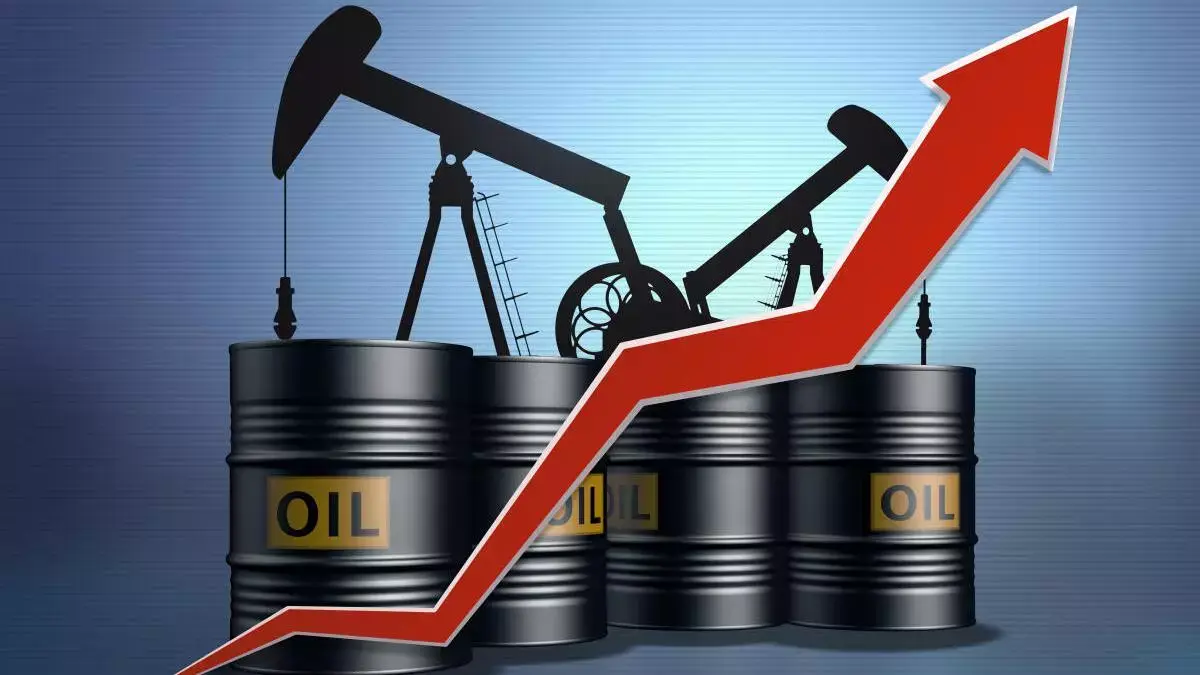
The financial world is once again on high alert as escalating tensions in the Middle East have triggered a sharp surge in global oil prices, sending shockwaves through equity, commodity, and currency markets alike. With the U.S. reportedly striking Iran’s nuclear sites, Brent crude surged over 18%, nearing $80 per barrel in a matter of hours. The sudden volatility reignited fears of a potential $100 oil scenario, reminiscent of past geopolitical flashpoints that deeply impacted global supply chains, inflation expectations, and central bank policy stances. This article delves into the causes, consequences, and global financial implications of this emerging crisis.
The Trigger: U.S. Strikes on Iran’s Nuclear Infrastructure
On June 21, 2025, international news outlets confirmed that U.S. military forces had targeted Iranian nuclear facilities in what they described as a “pre-emptive defensive measure.” While the full extent of the damage is still being assessed, the attack has clearly escalated tensions in an already volatile region. The Middle East, being a vital hub for global oil production and shipping, plays a significant role in maintaining supply stability. Iran, which controls access to the Strait of Hormuz – a key chokepoint through which nearly 20% of the world’s oil supply passes—responded with threats to close the strait and intensify its military posturing. This heightened the risk premium in energy markets virtually overnight.
Oil Prices React Swiftly to Geopolitical Instability
Crude oil, especially Brent and West Texas Intermediate (WTI), reacted with extreme sensitivity to the developments. Brent crude jumped over 18% within a 24-hour period, while WTI saw a comparable surge. Analysts at Goldman Sachs and JPMorgan warned that if the Strait of Hormuz were to be blocked, prices could surpass $100 per barrel within weeks. The last time the oil market saw such an intense geopolitical premium was during the 2019 drone attacks on Saudi oil facilities. However, the current situation has a more severe undertone due to the involvement of nuclear assets and direct military strikes between two powerful adversaries.
Safe Haven Assets Soar as Risk Appetite Declines
As is common in times of geopolitical crisis, investors flocked to safe-haven assets such as gold, the U.S. dollar, and U.S. Treasuries. Gold climbed above $2,400 per ounce, a level not seen in years, while the U.S. dollar index rose nearly 2% as capital fled emerging markets and riskier assets. Meanwhile, 10-year U.S. Treasury yields fell sharply, reflecting a surge in demand for perceived low-risk instruments. Cryptocurrency markets, particularly Bitcoin, experienced a brief rally as some investors viewed digital assets as alternative stores of value, although that rally quickly reversed amid broader market instability.
Stock Markets Face Broad Sell-Off, Led by Energy-Sensitive Sectors
Equity markets around the globe responded negatively. The S&P 500 and NASDAQ both dropped over 2.5% in intraday trading, led by declines in consumer discretionary, industrials, and airline stocks, which are highly sensitive to fuel price increases. European indices such as the FTSE 100 and DAX also saw steep losses, while Asia-Pacific markets like the Nikkei 225 and Hang Seng Index fell sharply as investors priced in a higher global risk premium. Interestingly, energy stocks provided the only bright spot in an otherwise red sea of market activity, with companies like ExxonMobil and Chevron posting strong gains on expectations of rising revenues.
Inflationary Pressures Could Derail Central Bank Strategies
The surge in oil prices couldn’t have come at a worse time for global central banks. After years of battling inflation through aggressive interest rate hikes, many central banks had only just begun to pause or consider rate cuts in 2025. However, higher energy prices feed directly into inflation, particularly in transport, manufacturing, and agriculture sectors, potentially forcing monetary authorities to reverse their dovish pivot. The European Central Bank (ECB), which had recently initiated its first rate cut in years, may now face pressure to hold off on further easing. Similarly, the Federal Reserve, which had opted to maintain its current rate in the last FOMC meeting, is likely to adopt a more hawkish tone moving forward.
Emerging Markets Bear the Brunt of the Crisis
The fallout from spiking oil prices is especially damaging for emerging markets, which are typically more sensitive to commodity price fluctuations. Countries like India, Turkey, and South Africa, which are major oil importers and have significant current account deficits, saw their currencies depreciate against the dollar. This adds to inflationary pressures and increases the cost of dollar-denominated debt, complicating fiscal and monetary policy responses. Foreign institutional investors also withdrew capital from these markets, adding to equity market stress and further depressing sentiment.
Global Economic Growth at Risk
Economists are revising down global GDP forecasts amid fears that higher oil prices will dampen consumer spending, elevate production costs, and destabilize corporate earnings. According to the IMF, a sustained oil price above $90 could reduce global GDP growth by 0.5% annually, with some regions like Southeast Asia and Sub-Saharan Africa experiencing even greater negative impacts. Supply chains, already recovering from post-pandemic disruptions and trade tensions, now face renewed uncertainty due to potential shipping bottlenecks in the Persian Gulf.
Outlook: What Comes Next for Markets and Policymakers?
Going forward, much depends on how the situation in the Middle East evolves. A de-escalation through diplomatic channels, possibly via UN or EU mediation, could stabilize oil prices and soothe market nerves. On the other hand, if Iran follows through on its threat to block the Strait of Hormuz or retaliates militarily, the crisis could escalate into a full-blown regional conflict with severe repercussions for global trade and energy supply. Policymakers worldwide are monitoring the situation closely, and emergency meetings by OPEC and G20 finance ministers are already being planned. The International Energy Agency (IEA) has also signaled its willingness to release strategic petroleum reserves if needed to calm markets.
The Road Ahead is Uncertain but Manageable
In the face of rising geopolitical tensions and economic uncertainty, investors are advised to adopt a cautious, diversified approach. While markets remain volatile and unpredictable, sound investment principles – such as maintaining a balanced portfolio, avoiding over-leveraged positions, and focusing on long-term fundamentals – remain more relevant than ever. The oil price spike triggered by the U.S.-Iran conflict is a potent reminder of how global politics and finance are deeply intertwined, and why staying informed and agile is critical in today’s interconnected world.
-

 Technology and Finance3 months ago
Technology and Finance3 months agoThe Future of Quantum Computing in Financial Modeling and Trading
-
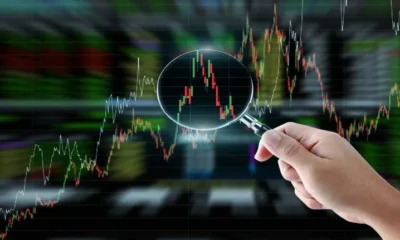
 Finance3 months ago
Finance3 months agoUSA Market Trends & Global Finance Insights
-
Finance3 months ago
Navigating Retirement in the Gig Economy: Challenges and Solutions
-
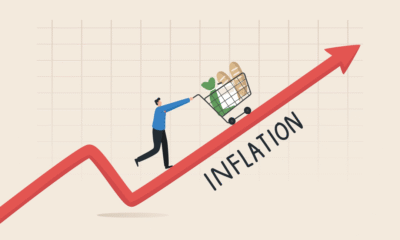
 Finance3 months ago
Finance3 months agoNavigating Personal Finance in the Age of Inflation and High Interest Rates
-

 Finance3 months ago
Finance3 months agoTop 10 High-Yield Savings Accounts in the US (2025 Edition)
-

 Investing & Finance3 months ago
Investing & Finance3 months agoFractional Investing: The Path to Wealth Democratization
-

 Finance3 months ago
Finance3 months agoDecentralized Finance (DeFi): Opportunity or Risk? A Deep Dive into the Rise of DeFi Platforms and Their Challenge to Traditional Finance
-

 Personal Finance2 months ago
Personal Finance2 months agoHow Gen Z is Saving Differently Than Millennials







